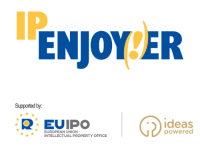Brevetti e Marchi: Quali sono le differenze? Cosa non si può brevettare o registrare?
5 Settembre 2024Appuntamenti di settembre per aspiranti imprenditori
10 Settembre 2024Patents and Trademarks: What Are the Differences? What Can’t Be Patented or Registered?
 If you’re starting your creative or entrepreneurial journey, you’ve likely heard about patents and trademarks. These are essential tools for protecting your ideas and brand, but it’s important to understand the differences between them and know what can and cannot be protected.
If you’re starting your creative or entrepreneurial journey, you’ve likely heard about patents and trademarks. These are essential tools for protecting your ideas and brand, but it’s important to understand the differences between them and know what can and cannot be protected.
What Are the Differences Between Patents and Trademarks?
Patents: Patents protect technical inventions. If you’ve developed a new product, process, or technology that solves a problem in an innovative way, you can apply for a patent. This gives you the exclusive right to produce, use, and sell your invention for a limited period, usually 20 years. However, a patent is granted only if the invention is new, involves an inventive step, and is industrially applicable.
Trademarks: Trademarks, on the other hand, protect the distinctive signs that identify and differentiate the products or services of a company. These can include names, logos, symbols, colors, or sounds. A trademark allows you to distinguish your product or service in the market and prevents others from using similar signs that could confuse consumers.
What Cannot Be Patented?
Not everything can be patented. Here are some things that are not patentable:
- Scientific Discoveries and Theories: Natural discoveries, scientific theories, and mathematical methods cannot be patented. For example, you cannot patent the law of gravity.
- Literary and Artistic Works: Artistic, literary, and musical works are protected by copyright, not patents.
- Abstract Ideas: You cannot patent an abstract idea. The invention must be concrete and industrially applicable.
- Game Methods or Rules: Methods of playing games, rules, and teaching methods are not patentable.
- Software and Web Applications
- Business methods
What Cannot Be Registered as a Trademark?
There are also limitations on what can be registered as a trademark:
- Generic Names: You cannot register a generic or descriptive name as a trademark, like “Pizza” for a pizzeria. The trademark must be distinctive.
- Deceptive Signs: Signs that can mislead the public about the characteristics, origin, or quality of a product or service cannot be registered.
- Public or State Symbols: State emblems, flags, or other public symbols cannot be registered as trademarks.
- Offensive Trademarks: Signs that contain offensive, immoral, or contrary to public order words or symbols cannot be registered.
A Case Example: “Apple” and the Generic Trademark
An interesting case involves the registration of the “Apple” trademark. When Steve Jobs and Steve Wozniak founded their company, naming it “Apple,” there were doubts about whether the name could be registered as a trademark. “Apple” is a generic term that describes a fruit, but since it did not describe the company’s technology products, it was considered distinctive and registrable. However, if they had wanted to use the name “Apple” for a company selling apples, it would not have been possible to register it as a trademark.
Conclusion
Understanding the difference between patents and trademarks, and knowing what can and cannot be protected, is crucial for anyone looking to safeguard their ideas and brand. Investing in intellectual property protection will help you build a strong foundation for your entrepreneurial future, ensuring your creations are unique and recognized in the market.
Don’t underestimate the importance of these tools: they can make the difference between a successful idea and a missed opportunity.
IP Enjoy(!)er is a project co-funded under the EUIPO Ideas Powered GR/003/23 programme.
